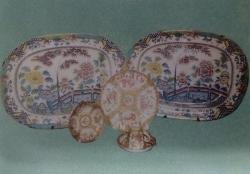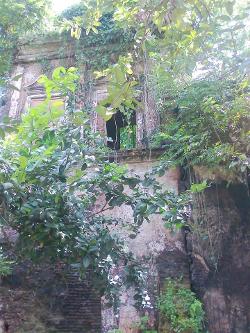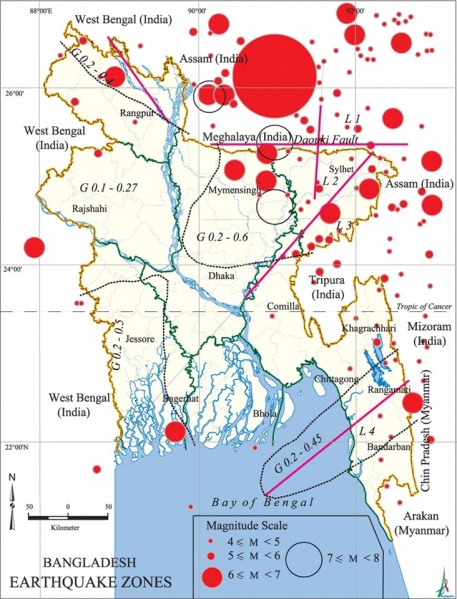

The Guniauk Zamindari was a Zamindari family based in Guniauk, East Bengal, India. Later, this location included to the district Tipperah in 1790 during the British rule. Currently, Guniauk is a union of Nasirnagar sub-district of Brahmanbaria district in the division of Chattogram, Bangladesh. This Zamindari was founded in the early 1600s to 1700s by Pir Mahmud Shaheb who came to this country with his followers and people from the other country and dynasty. From some reliable sources, it can be stated that they came to this country for preaching the religion Islam as well as for ruling this state from the the outside of Indian subcontinent.
He established the Guniauk Zamindar Palace (Guniauk Zamindar Palace, also known as Shaheb Bari). The palace was huge and beautiful. Pir Mahmud Shaheb acquired a vast amount of lands, water-lands and ponds and others. The local people admired Him and his family. They became one of the most powerful, influential and respected Zamindars. Back then, they belonged to the finest class in Tippera region. At first, they control a vast territory later they became the controller of 39 mouzas (several villages typically form a single mouza).[1] But the palace was devastated by one of the most powerful earthquakes, named Great India Earthquake with the magnitude of 8.8 that took place on Saturday, June 12, 1897, in Assam.[2] Dozens of aftershocks were felt in and around the region with the last event being felt on 9 October 1897 at 01:40 UT in Calcutta.[3] Before and after the year 1897 several earthquakes happened 1812, 1889 and 1918 as a result, the palace became uninhabitable after 1930. After 1930 the palace had been abandoned and got destroyed in the years to come. Now, there is no solid structure of this Zamindar bari, just some of the ruins are available there.

Figure: Bangladesh during The Great India Earthquake 1897
'' The tremor was felt throughout Bengal, from the south Lushai Hills on the east to Shahbad on the west. In Mymensingh, many public buildings of the district town, including the Justice House, were wrecked and very few of the two-storied brick-built houses belonging to Zamindars survived. Heavy damage was done to the bridges on the Dhaka-Mymensingh railway and traffic was suspended for about a fortnight. The river communication of the district was seriously affected (Brahmaputra). Loss of life was not great, but the loss of property was estimated at five million Rupees. In Tippera masonry buildings and old temples suffered a lot and the total damage was estimated at Rs 9,000.'' [3]
They were Sunni Muslim by origin. They used to speak in Persian at first. Later, they learned Bengali for external communication. Yet, they used Persian for their internal communication. Most of the male members could speak in Persian, Urdu, English and Bengali and the female members of this family could speak in Persian, Urdu and Bengali at that time, though some of the female members also knew English. They had quite a different and sophisticated life than that of the local well-known families in the past. Because of their lifestyle, the locals used to call them "Shaheb or Shab" and their palace was entitled as "Shaheb or Shab Bari."
Barrister Abdur Rasul/ Abdul Rasul, Moulvi Molazem Rasul, Moulvi Monjur Ali, Moulvi Atikur Rasul, Saidul Hossain, Samiul Ahmed Khan were well-known persons of this family.
After leaving the palace the family members started living in new three houses. They never cared about the establishments, as a result, they did not recreate their palace again after it got destroyed. As the family got bigger, they needed three houses for living. Still, now these three houses are like living witness of the Guniauk Zamindar family. Names of the three houses are Big (Boro) Shaheb Bari, East Shaheb Bari and West (New or Nowa) Shaheb Bari. Some of the descendants of Guniauk Zamindarbari are still living there. Others are living in abroad and other parts of Bangladesh.
The Guniauk Zamindar family always maintained good terms with the prominent zamindars, nawabs and families. They never compromised when it came to a matrimonial relationship. The house always made the finest choice. As a result, most of the prominent zamindars and families became their relatives. Among them Chowdhury Bari Satgaon from Brahmanbaria; Dhanbari from Tangail; Furura Khan Bari from Kishoreganj; Machhihata's Pir Shaheb Bari from Brahmanbaria; Mia Bari from Kishoreganj; Nawab Bari from Dhaka; Panni family (Karatia Zamindar) from Tangail; Kha Bari Pairtala from Brahmanbaria; Syed Bari, Khandura from Brahmanbaria; Mazumdari from Sylhet and so on are notable. They had quite a reputation for maintaining their status and aristocracy at that time.
The Zamindari system was mostly abolished in independent India soon after its creation with the first amendment to the constitution of India which amended the right to property as shown in Articles 19 and 31. This allowed the states to make their own "Zamindari Abolition Acts". In Bangladesh, the East Bengal State Acquisition and Tenancy Act of 1950 had a similar effect of ending the system.[4] In 1950 Guniauk Zamindari was no longer in state of power after the system was abolished during land reforms in East Bengal (Bangladesh).
https://www.ancestry.com/family-tree/tree/157458610/family/familyview
The small portion of ruins of the Zamindar Palace
The family mosque of Guniauk Zamindari

The utensils of the family which were used in 1800s to 1900s

The small portion of ruins of the Zamindar Palace
''In today's independent Bangladesh, we became a lost history. We lost our assets, money, fame by the abolition of the zamindari system and the new rise of equality concept. Those know us from the past still know about our family.''
''In today's Bangladesh, most of the real prominent families have been forgotten. Real prominent families have already left this country, are sill leaving this country and will be leaving this country. Because this country has lost the proper structure of the society. There is no class and discipline''
''Blood and class,both of these are thicker than money. You cannot buy them.''
'' There was a time when I was looked upon by a large number of my co-religionist as a dangerous person. My political views were considered by some leaders,at any rate, too advanced for the Moslem community and therefore, they thought any association with me was enough to jeopardize their or relative's prospects or chances of success in life. My only fault as far I could see was that I was a congresswallah ....Some up-country papers went so far as to call me a traitor to the community.....I admit I have sometimes used warm expressions, but I trusted that my people would attribute them to the strength of convictions and to my solicitude for general welfare.''
There were several prominent influential zamindars family before the birth of Bangladesh. After the abolition of the Zamindari system and the arrival of so-called equality theory, these famous real old Zamindars have been forgotten. Most of them were dead and the people who knew those legendary families were also dead. But as a sign of gratitude and to expose the real history, this website has been made. This website is a small effort and a tribute to this legendary zamindar family of Guniauk Zamindari. We should not forget the real one.
Before and after the partition, there were several fake new zamindars and nawabs. The new rich families just bought the property and became zamindars and nawabs in the era of the Independent Sultanate and the British period. But they were not that royal descendants. There is a significant difference between the New Rich People and the Ancient Royal People. And people always get confused about this. Remember, not all the rich people belong to the royal family or the classy family. Nowadays, not all the real royal or classy families have that amount of money. And the real ones are forgotten because we are an ungrateful nation. We always make the wrong choice and a stupid assumption. We always think a person cannot be from a royal family if he/she does not possess a vast amount of assets. This assumption is wrong. It can be hoped, one day people of Bangladesh will realize the difference and respect the real classy and original zamindars.
It would be so great if you want to help us with related information about this family. If you are a descendant of this prominent family or you know about this Guniauk Zamindari please let us know by sending us a mail at zamindariguniauk@gmail.com.
Thank you for reading!!
© Copyright Guniauk Zamindari
Make a free website with Yola